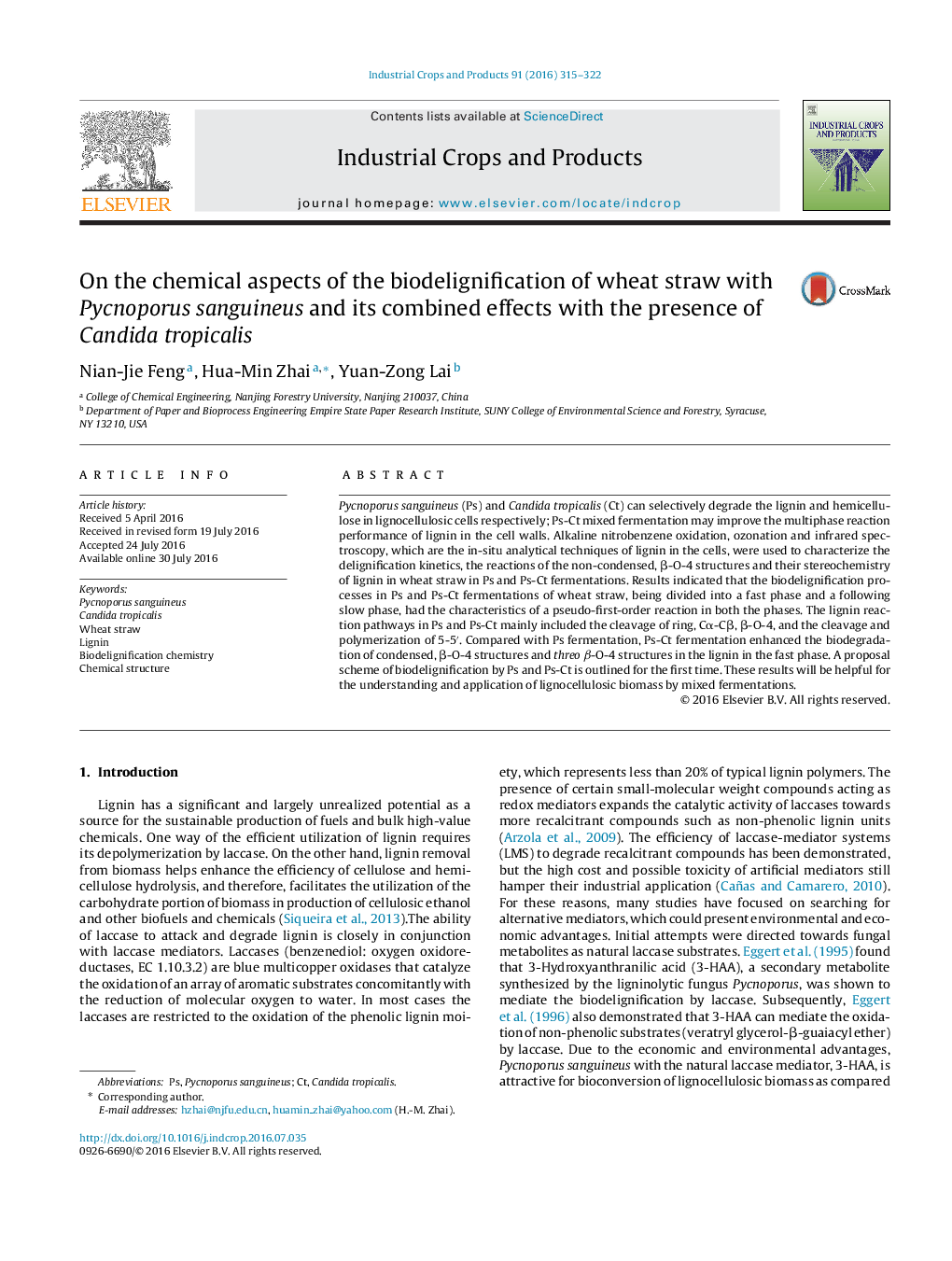| Article ID | Journal | Published Year | Pages | File Type |
|---|---|---|---|---|
| 4511992 | Industrial Crops and Products | 2016 | 8 Pages |
A fast delignification phase and a following slow one were shown in Ps and Ps-Ct.Pseudo-first-order reactions were revealed for both the two phases.Ps biodelignification in the fast phase was extended by Ct.Uncondensed G unit and E β-O-4 structures were biodegraded by Ps.Ps biodegradation of condensed lignin and T β-O-4 structures was enhanced by Ct.
Pycnoporus sanguineus (Ps) and Candida tropicalis (Ct) can selectively degrade the lignin and hemicellulose in lignocellulosic cells respectively; Ps-Ct mixed fermentation may improve the multiphase reaction performance of lignin in the cell walls. Alkaline nitrobenzene oxidation, ozonation and infrared spectroscopy, which are the in-situ analytical techniques of lignin in the cells, were used to characterize the delignification kinetics, the reactions of the non-condensed, β-O-4 structures and their stereochemistry of lignin in wheat straw in Ps and Ps-Ct fermentations. Results indicated that the biodelignification processes in Ps and Ps-Ct fermentations of wheat straw, being divided into a fast phase and a following slow phase, had the characteristics of a pseudo-first-order reaction in both the phases. The lignin reaction pathways in Ps and Ps-Ct mainly included the cleavage of ring, Cα-Cβ, β-O-4, and the cleavage and polymerization of 5-5⿲. Compared with Ps fermentation, Ps-Ct fermentation enhanced the biodegradation of condensed, β-O-4 structures and threo β-O-4 structures in the lignin in the fast phase. A proposal scheme of biodelignification by Ps and Ps-Ct is outlined for the first time. These results will be helpful for the understanding and application of lignocellulosic biomass by mixed fermentations.
Graphical abstractFigure optionsDownload full-size imageDownload as PowerPoint slide
